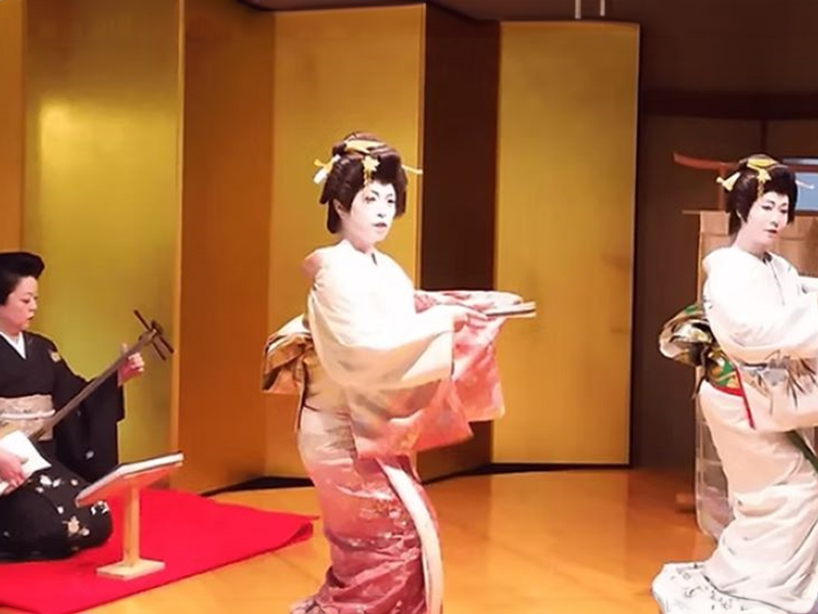Bus-Guide
Around Tokyo
Bus-Guide 関東エリアバス観光ガイド
Kanto Area Bus Tourist Guide
関東エリアバス観光ガイド
Kanto Area Bus Tourist Guide
Bus-Guide
Copyright NIHON BUS ASSOCIATION

GUIDE 02
滞在時間12:30-14:00
Length of Stay12:30-14:00
東京駅発 茨城県水戸市 Tokyo Station Mito City, Ibaraki Prefecture
水戸芸妓の舞&鰻 Mito Geisha Dance and EelsGUIDE02
水戸芸妓の舞&鰻亭(ばんてい) Mito Geisha Dance and Eels(Bantei)
水戸大工町は、江戸時代から続く繁華街で、水戸藩士や町人が行き交う賑やかな場所でした。大工や職人が集まり、多くの商店や飲食店が軒を連ねていました。 Mito Daikumachi is a bustling shopping district that has existed since the Edo period, and was a bustling place where Mito feudal lords and townspeople came and went. Carpenters and craftsmen gathered here, and many shops and restaurants lined the streets.

水戸で創業百余年の歴史を持つ懐石料理店として人気が高い「鰻亭」は、主人みずから腕を振るう「うなぎ料理」が特に有名です。何年も受け継がれてきたその絶妙な味・香り・食感・火入れは絶品です。
粋を極めた水戸芸妓の舞を鑑賞いただきながら、伝統の鰻の味をお楽しみください。
Unagi-tei is a popular kaiseki restaurant in Mito with over 100 years of history, and is especially famous for its eel dishes, which are prepared by the owner himself. The exquisite taste, aroma, texture, and cooking method, which have been handed down for many years, are superb.
Enjoy the traditional taste of eel while watching the sophisticated dance of Mito geisha.

<もっと知りたい!深掘り>
~大工町の歴史~
I want to know more! Digging deeper
~History of Daikumachi~
水戸の大工町は、江戸時代に水戸城の整備や城下町の建設のために集められた大工や職人が住んでいたことに由来する町で、北関東有数の繁華街として知られています。
日清戦争の頃には、すでに芸妓置屋と料亭で賑わいを見せ、明治42年に歩兵第二連隊の駐屯地が佐倉から水戸に移転したことから、料亭やお茶屋などが誘致され、一大歓楽街として発展しました。
第二次世界大戦中、水戸市は空襲の被害を受けましたが、戦後の復興とともに大工町も再び発展。昭和の時代には水戸市の代表的な繁華街の一つとして、多くの飲食店や歓楽街が形成されました。
今もなお、花街としての風情も残されており、和服姿の舞方(水戸芸能士協会)と楽しむお座敷文化にも触れることができます。
Daikumachi in Mito traces its origins to the Edo period, when carpenters and other craftsmen gathered to build and maintain Mito Castle and its surrounding castle town. Today, it is known as one of the foremost entertainment districts in the northern Kanto region. Around the time of the First Sino-Japanese War (1894–1895), the area already thrived with geisha houses and traditional restaurants (ryotei). In 1909 (Meiji 42), the Second Infantry Regiment was relocated from Sakura to Mito, prompting a significant influx of ryotei and teahouses (ochaya), which further transformed Daikumachi into a major pleasure quarter.
During World War II, Mito suffered from air raids, but Daikumachi rebounded along with the city’s postwar recovery. In the Showa era, it became one of Mito’s most prominent entertainment districts, hosting numerous eateries and nightlife venues. Even today, the atmosphere of a traditional geisha district (kagai) remains, and visitors can still experience ozashiki culture—complete with performers dressed in kimono (from the Mito Geinoshi Association)—in an authentic setting.
鰻亭(ばんてい) Bantei
〒310-0026 茨城県水戸市泉町3丁目5−4 Assesses 3-5-4 Izumicho, Mito City, Ibaraki Prefecture, 310-0026
https://www.bantei.com/